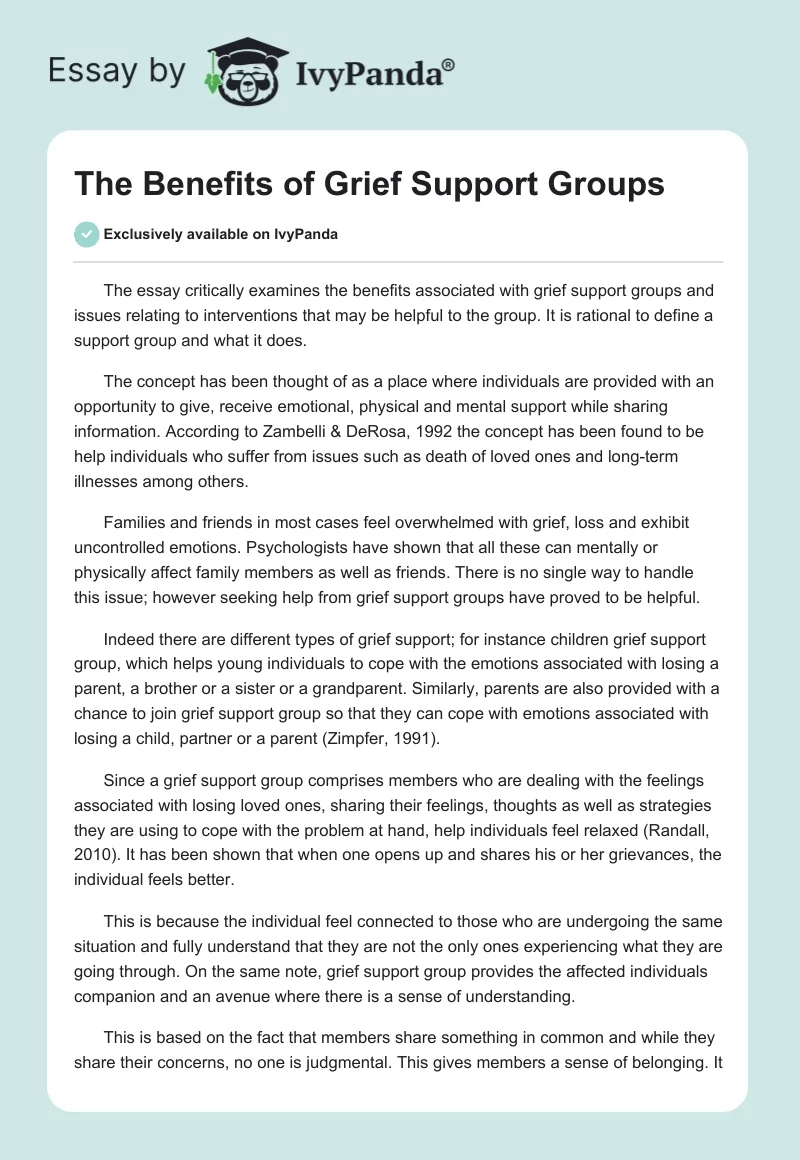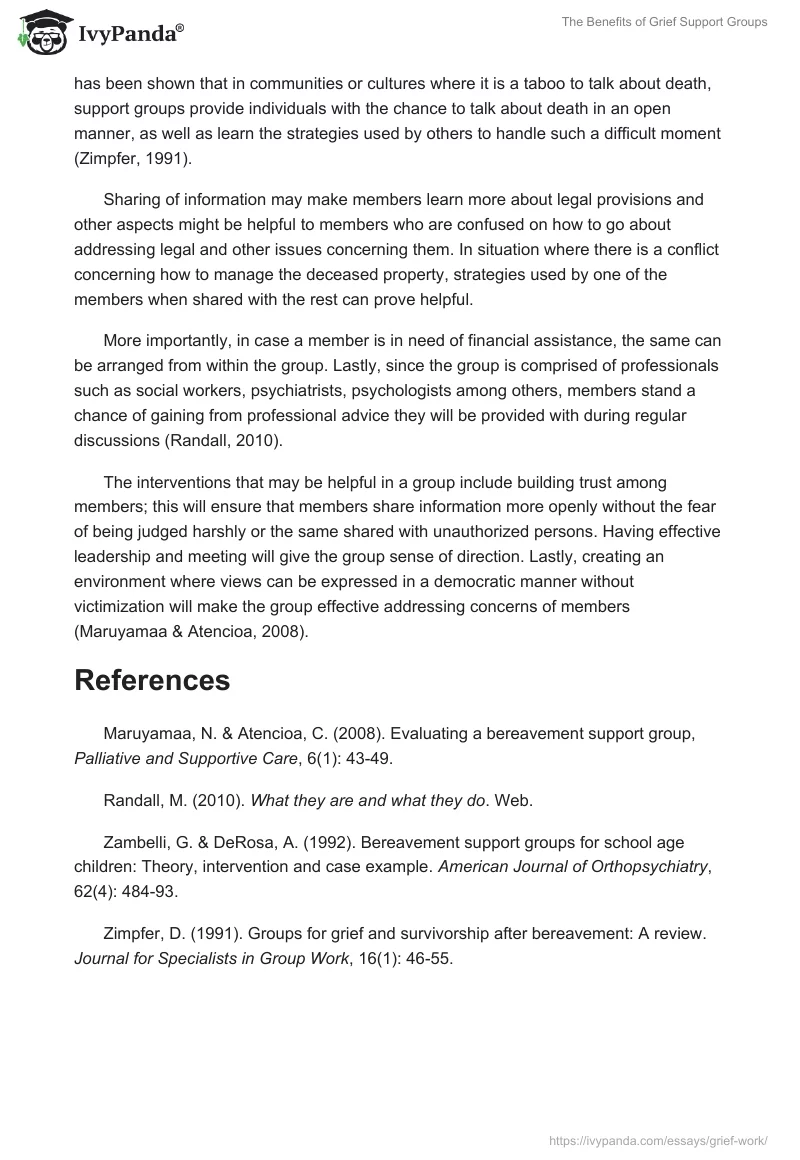The essay critically examines the benefits associated with grief support groups and issues relating to interventions that may be helpful to the group. It is rational to define a support group and what it does.
The concept has been thought of as a place where individuals are provided with an opportunity to give, receive emotional, physical and mental support while sharing information. According to Zambelli & DeRosa, 1992 the concept has been found to be help individuals who suffer from issues such as death of loved ones and long-term illnesses among others.
Families and friends in most cases feel overwhelmed with grief, loss and exhibit uncontrolled emotions. Psychologists have shown that all these can mentally or physically affect family members as well as friends. There is no single way to handle this issue; however seeking help from grief support groups have proved to be helpful.
Indeed there are different types of grief support; for instance children grief support group, which helps young individuals to cope with the emotions associated with losing a parent, a brother or a sister or a grandparent. Similarly, parents are also provided with a chance to join grief support group so that they can cope with emotions associated with losing a child, partner or a parent (Zimpfer, 1991).
Since a grief support group comprises members who are dealing with the feelings associated with losing loved ones, sharing their feelings, thoughts as well as strategies they are using to cope with the problem at hand, help individuals feel relaxed (Randall, 2010). It has been shown that when one opens up and shares his or her grievances, the individual feels better.
This is because the individual feel connected to those who are undergoing the same situation and fully understand that they are not the only ones experiencing what they are going through. On the same note, grief support group provides the affected individuals companion and an avenue where there is a sense of understanding.
This is based on the fact that members share something in common and while they share their concerns, no one is judgmental. This gives members a sense of belonging. It has been shown that in communities or cultures where it is a taboo to talk about death, support groups provide individuals with the chance to talk about death in an open manner, as well as learn the strategies used by others to handle such a difficult moment (Zimpfer, 1991).
Sharing of information may make members learn more about legal provisions and other aspects might be helpful to members who are confused on how to go about addressing legal and other issues concerning them. In situation where there is a conflict concerning how to manage the deceased property, strategies used by one of the members when shared with the rest can prove helpful.
More importantly, in case a member is in need of financial assistance, the same can be arranged from within the group. Lastly, since the group is comprised of professionals such as social workers, psychiatrists, psychologists among others, members stand a chance of gaining from professional advice they will be provided with during regular discussions (Randall, 2010).
The interventions that may be helpful in a group include building trust among members; this will ensure that members share information more openly without the fear of being judged harshly or the same shared with unauthorized persons. Having effective leadership and meeting will give the group sense of direction. Lastly, creating an environment where views can be expressed in a democratic manner without victimization will make the group effective addressing concerns of members (Maruyamaa & Atencioa, 2008).
References
Maruyamaa, N. & Atencioa, C. (2008). Evaluating a bereavement support group, Palliative and Supportive Care, 6(1): 43-49.
Randall, M. (2010). What they are and what they do. Web.
Zambelli, G. & DeRosa, A. (1992). Bereavement support groups for school age children: Theory, intervention and case example. American Journal of Orthopsychiatry, 62(4): 484-93.
Zimpfer, D. (1991). Groups for grief and survivorship after bereavement: A review. Journal for Specialists in Group Work, 16(1): 46-55.


